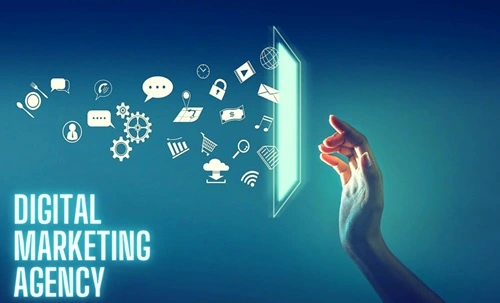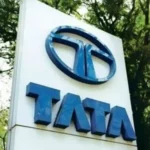In a world where almost 60% of the global population is online and over 80% of internet users engage with brands via digital channels daily, digital marketing has become the cornerstone of business growth and consumer engagement. From nimble startups in Bangalore leveraging WhatsApp Business for hyper‑local sales to multinational giants in Mumbai running multi‑million‑dollar programmatic video campaigns, digital marketing’s reach and impact are unprecedented. In 2025, powered by AI, hyper‑personalization, and emerging platforms like the metaverse, digital marketing continues to evolve at lightning speed—transforming not only how brands communicate but also how consumers discover, interact, and transact.
Let’s explore its Strengths that drive ROI and brand love, Weaknesses that demand attention, Opportunities ripe for exploration, and Threats that marketers must navigate to stay ahead of the curve.

Strengths: Core Drivers of Digital Marketing’s Success
1. Data‑Driven Precision
Today’s marketers can access real‑time insights on user behavior, demographics, interests, and purchase intent. Advanced analytics dashboards—powered by machine learning—enable precise audience segmentation and predictive modeling. Campaigns can be continuously optimized for click‑through rates, conversion, and lifetime value, delivering exceptional ROI compared to traditional media.
2. Cost‑Effectiveness and Scalability
Digital channels—from search ads and social media to email and influencer partnerships—allow brands of any size to launch campaigns on modest budgets. Platforms like Google Ads, Facebook Ads, and programmatic exchanges democratize access, while performance‑based pricing (CPC, CPA) ensures spend is tied to actual outcomes. As businesses grow, digital marketing scales with them without needing exponential budget increases.
3. Hyper‑Personalization and Customer Experience
With AI‑driven content recommendations, dynamic ad creatives, and marketing automation, brands can deliver tailor‑made experiences at every touchpoint. In India, regional language targeting on platforms like ShareChat and localized content on YouTube Shorts drive deeper engagement among Bharat audiences, fostering loyalty and higher average order values.
4. Multichannel Reach and Agility
From omnichannel attribution across web, mobile, and in‑app environments to emerging mediums like voice search (via Alexa, Google Assistant) and connected TV, digital marketing covers the customer journey end‑to‑end. Campaigns can be tweaked in minutes to respond to market shifts—whether that’s a viral TikTok trend or sudden changes in search behaviour due to world events.
5. Measurability and Accountability
Every click, view, and micro‑engagement is trackable. Marketers can attribute revenue to specific campaigns, creatives, or keywords, ensuring full transparency and accountability. This data‑backed approach fosters cross‑functional collaboration between marketing, sales, and finance teams.
Weaknesses: Challenges Within Digital Marketing
1. Ad Fatigue and Consumer Skepticism
The average internet user sees hundreds of ads daily. Banner blindness, ad blockers, and “skip” behavior on video ads hinder message delivery. Consumers are increasingly wary of intrusive or irrelevant ads, demanding higher creativity and value‑added content to break through the noise.
2. Privacy Regulations and Data Limitations
The phasing out of third‑party cookies, GDPR‑style data protection laws in India (e.g., Personal Data Protection Bill), and platform‑level restrictions on data sharing (iOS’s App Tracking Transparency) limit the depth of user data accessible to marketers. Building first‑party data assets and gaining consent are now critical but time‑consuming.
3. Fragmentation of Platforms and Skill Gaps
The rapid pace of innovation means marketers must constantly learn new tools—AI copy generators, short‑form video editors, AR filter builders, conversational‑AI platforms, and more. Smaller teams often struggle to develop specialized skills across SEO, paid media, analytics, and creative production.
4. Over‑Reliance on Paid Channels
While paid advertising drives immediate visibility, over‑dependence can erode margins and expose brands to bidding wars. Without a balanced organic strategy (SEO, content marketing, community building), businesses risk unsustainable cost per acquisition spikes.
Opportunities: The Next Frontiers in Digital Marketing
1. AI‑Powered Creativity and Automation
Generative AI is transforming everything from ad copy and design to dynamic video editing and interactive chatbots. Marketers can auto‑generate dozens of ad variants, personalize messaging at scale, and free up teams to focus on high‑impact strategy and storytelling.
2. Metaverse and Immersive Experiences
With platforms like Meta’s Horizon Worlds and Decentraland, brands can create 3D showrooms, virtual events, and gamified campaigns. Early adopters—especially in fashion, real estate, and education—are already seeing high engagement and positive brand associations.
3. Voice and Visual Search Optimization
As voice assistants and image‑based shopping grow, optimizing content for natural‑language queries and visual discovery is paramount. Indian e‑commerce players like Flipkart are investing in camera‑based search, helping consumers find products via photos.
4. Sustainability and Purpose‑Driven Marketing
Consumers—particularly Gen Z and Millennials—expect brands to stand for social and environmental causes. Digital storytelling that highlights ethical sourcing, carbon‑neutral deliveries, or community initiatives can build deep emotional connections and drive word‑of‑mouth advocacy.
5. Regional and Vernacular Content
India alone accounts for 450+ million internet users who prefer content in Hindi, Tamil, Telugu, and other languages. Brands that invest in high‑quality vernacular assets and local influencer partnerships can tap into under‑penetrated markets with exceptional growth potential.
Threats: Navigating External Headwinds
1. Platform Dependency and Algorithm Changes
Sudden updates to search or social‑media algorithms can drastically impact organic reach and ad performance. Brands must diversify across channels and own real estate—like email lists and communities—to mitigate risk.
2. Rising Ad Costs and Competition
As more businesses vie for limited ad inventory, cost per click and impression continue to climb. Highly competitive sectors (education, fintech, D2C) often experience unsustainable CPMs and CPCs, requiring sharper creativity to maintain ROI.
3. Misinformation and Brand Safety Risks
Programmatic placements can inadvertently associate brands with controversial content. Ensuring robust brand‑safety protocols and trusted vendor partnerships is essential to protect reputation.
4. Rapid Technology Obsolescence
Tools and platforms that are cutting‑edge today may become obsolete tomorrow. Maintaining agility and a test‑and‑learn culture is vital to avoid sunk costs in underperforming technology stacks.
Conclusion: Embracing the Digital Marketing Evolution
In 2025, digital marketing stands at the nexus of data science, creative storytelling, and technological innovation. Its unparalleled measurability and personalization power make it the go‑to strategy for brands seeking efficient growth. Yet, amid rising privacy constraints, platform fragmentation, and escalating costs, marketers must continually adapt—investing in first‑party data, AI‑driven creativity, and purpose‑led narratives.
For Indian businesses from ambitious startups in Bengaluru to heritage brands in Kolkata digital marketing offers a level playing field and the promise of rapid scale. By capitalizing on vernacular content, immersive experiences, and sustainable marketing, while safeguarding against ad fatigue and regulatory shifts, brands can confidently navigate this dynamic landscape.

Meet Suhas Harshe, a financial advisor committed to assisting people and businesses in confidently understanding and managing the complexities of the financial world. Suhas has shared his knowledge on various topics like business, investment strategies, optimizing taxes, and promoting financial well-being through articles in InvestmentDose.com

